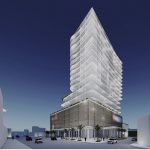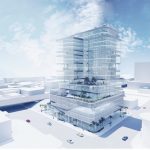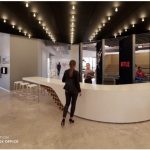The past year has brought about immense change to the curriculum at FIU’s School of Architecture (SOA). A discipline often rooted in collaboration and connectivity has had to find new ways to provide this same structure remotely. But the process for both the students and professors – while at times bittersweet – has opened new doors and opportunities for all those involved.
Each of the three departments, Architecture, Landscape Architecture + Environmental and Urban Design and Interior Architecture, took the virtual realm by storm and used it to collaborate, build and design – sometimes from other parts of the world.
According to SOA seniors, perhaps the biggest change to the curriculum was master’s candidates having to present and defend their final projects via Zoom. Typically, master’s candidates from all three disciplines spend their last semester developing their final projects while working in the design studio for about four hours a week with their mentor.
The Spring 2020 cohort, however, was the first to take this challenge on virtually. Instead of in-person studio times, professors created online critiques to meet with their students. In the final reviews, each student presented via Zoom to their cohort and were judged by a panel of jurors. After all the presentations were through, a student from each studio was then chosen to present their project to a panel of super jurors. The interior design final reviews even culminated with a discussion about new skills required to deal with design in the pandemic era.
“The biggest change with conducting my final review remotely was that everything was digital,” says recent architecture graduate, Ernesto Medina ’20. “No one had any physical projects to show. It was all presented through videos, graphics and digital renderings which made it seem very 21st century.”
Individually, each department also went through changes and accommodations to adapt its curriculum.
Professor Esperanza Muina, from the Department of Interior Architecture, created a digital site where students from her Workplace Design Studio would be uploading their final projects in lieu of having an in-person presentation. The website allowed students to upload project files, view lectures and resources and, most importantly, view other student presentations as they would have done if the class was being taught on campus. Muina also used her site to share important class messages and updates.
Gabrielle Moreira, Yaileen Obregon and Diana Zambrano, three students who were enrolled in Muina’s spring section of Workplace Design, ended up winning Festival of the Tree scholarships for excellence in design for their virtual projects.
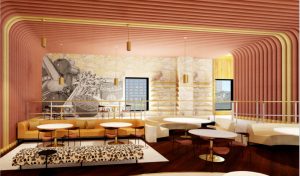
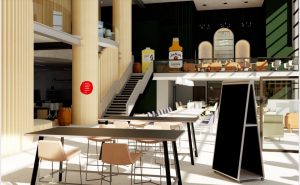
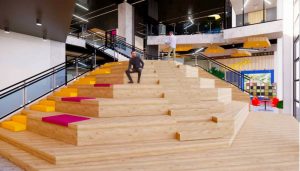
“Transitioning mid-semester to a completely remote workspace was definitely a challenge, but it was also a blessing in disguise,” Obregon says. “I saved time and money without commuting so much and I was able to put all my focus on this studio. Plus, the School of Architecture made the transition very easy on us, with scheduled times to pick up our belongings in the studios and coordinating virtual student meetings for weekly checks ups.”
Similar to Interior Architecture, many professors in the Department of Architecture also had students create video presentations to share their designs. Sophia Cabral, a student in Professor Claudio Salazar’s Summer 2020 studio course, took to the virtual realm from her hometown in Brazil. Cabral completed her entire summer term from Brazil while navigating different time zones and learning to create computer-generated designs and presentations.
“Creating a digital presentation turned out to be really great,” Cabral says. “I was able to share it with my family and friends and reach a larger audience by posting the presentation on my LinkedIn, so people could comment what they thought about it.”
In the Department of Landscape Architecture + Environmental and Urban Design (LAEUD), students saw the remote landscape as an opportunity to connect with outside peers.
Mara Stegaru, LAEUD student and president of the FIU chapter of American Society of Landscape Architects (ASLA), created the Spotlight Workshop series, along with her FIU ASLA team, to help students navigate learning remotely. The workshop series, which officially began in September, covers topics students have specifically requested to learn, such as staying productive while in quarantine, using household items to make models, creating Photoshop renderings and storytelling through graphics.
Students from each of FIU’s architecture disciplines, outside universities and even from other countries, have registered for these workshops to join in on these conversations.

“We really wanted to create a venue where students could interact with each other and we probably wouldn’t have developed these workshops if we weren’t remote,” Stegaru says. “Doing this virtually has allowed us to engage with a wide range of people. And because the workshops are responding directly to what participants want to know, people are really excited to come.”
Through these new innovative teaching methods and digital mediums, the School of Architecture has been able to provide an engaging and in-depth curriculum while also teaching students new ways to create and design in the digital landscape.
“I believe FIU’s School of Architecture took the necessary precautions when it came to each student’s health,” says Moreira. “Transitioning online wasn’t the difficult part, adapting to it was, but with the help of all of our amazing professors and peers, it went smoothly. The end result was satisfactory; there wasn’t any discomfort and they still allowed leeway for all students to continue to be expressive and creative.”


